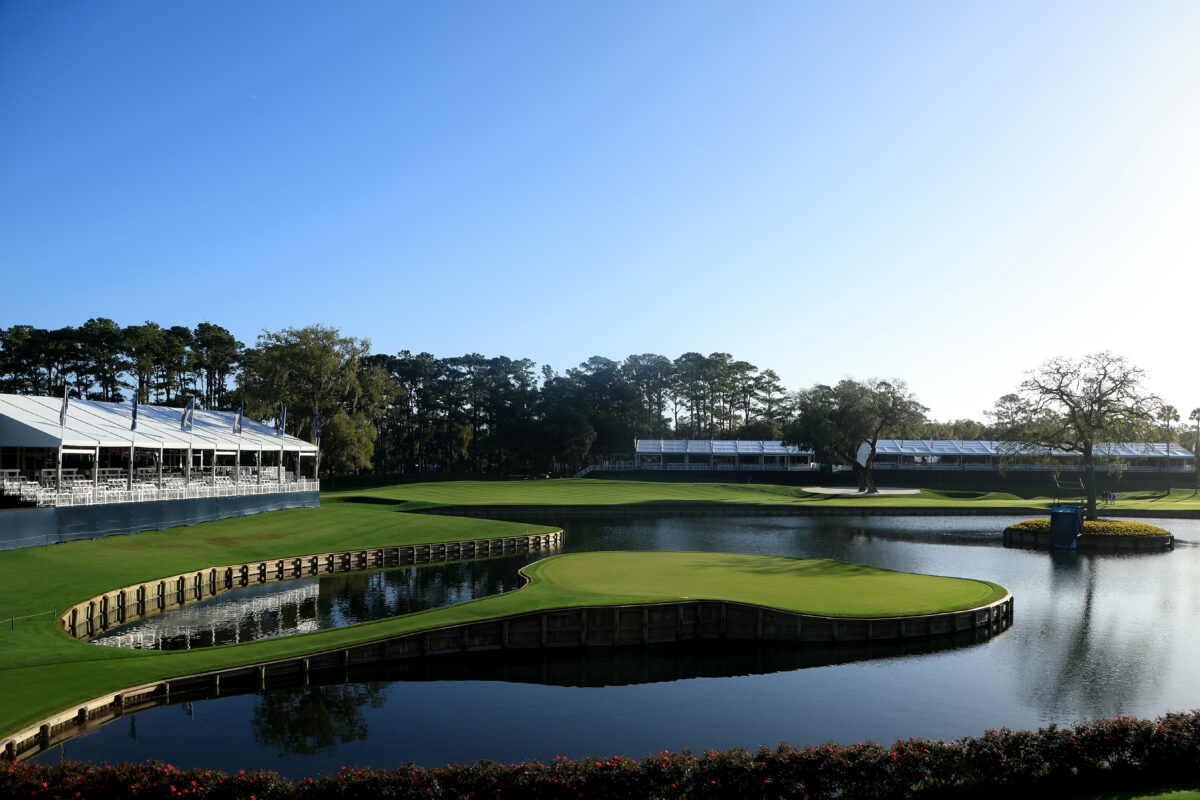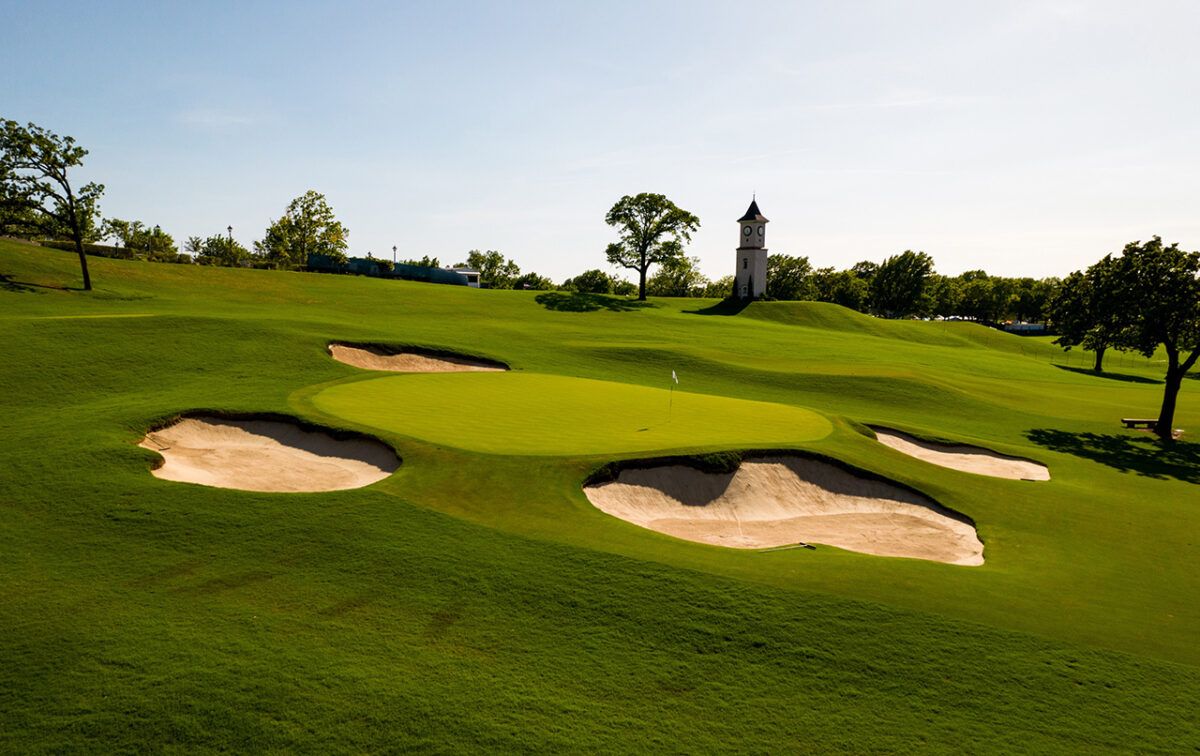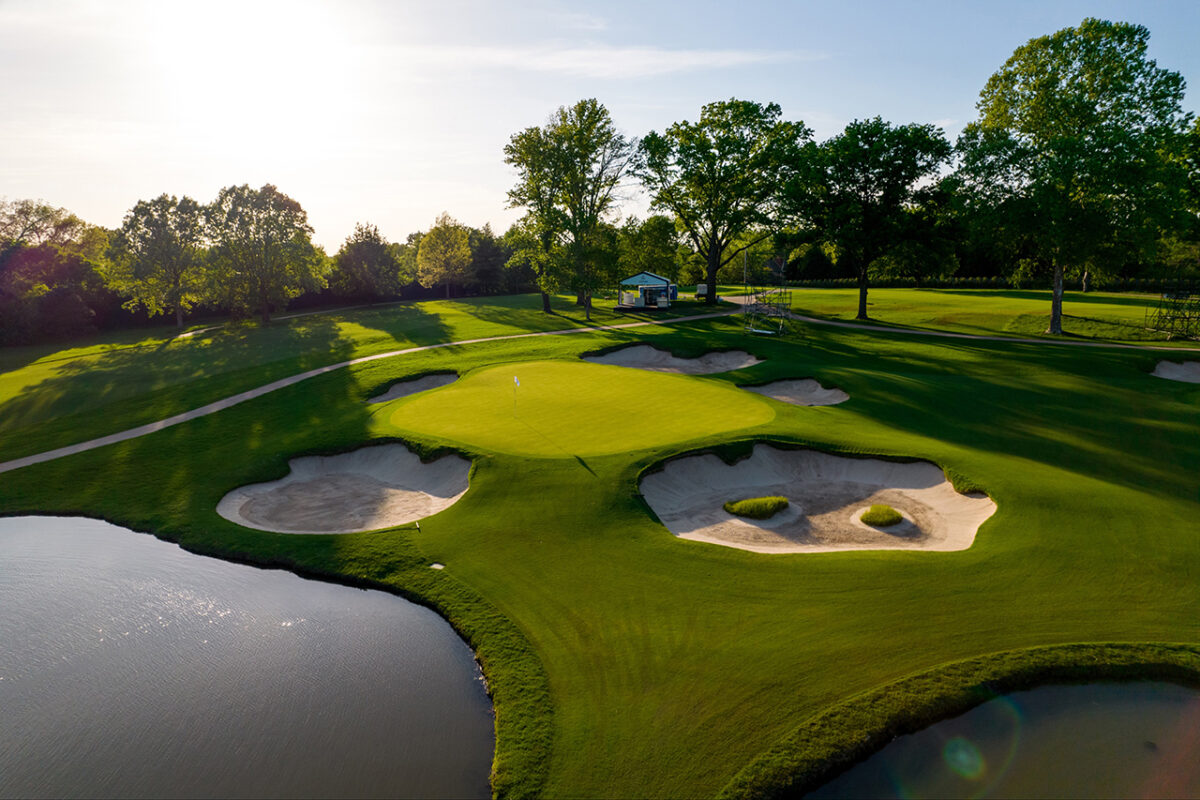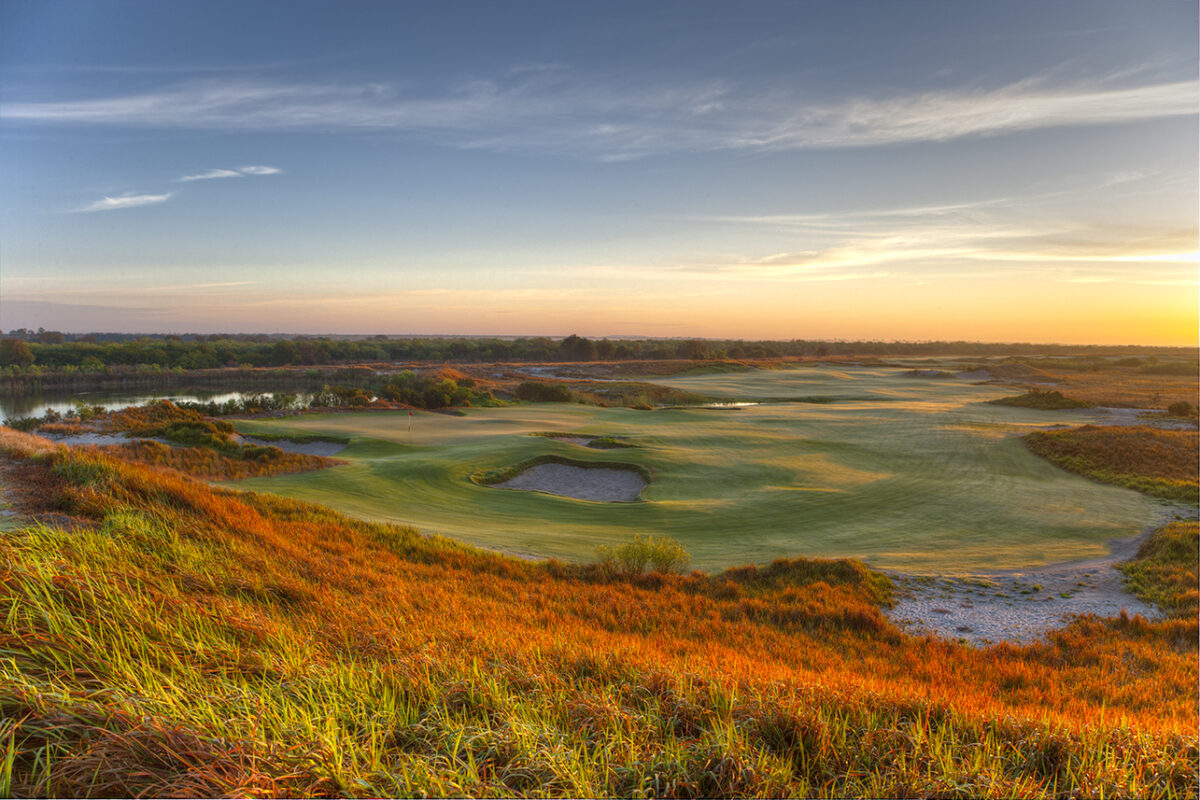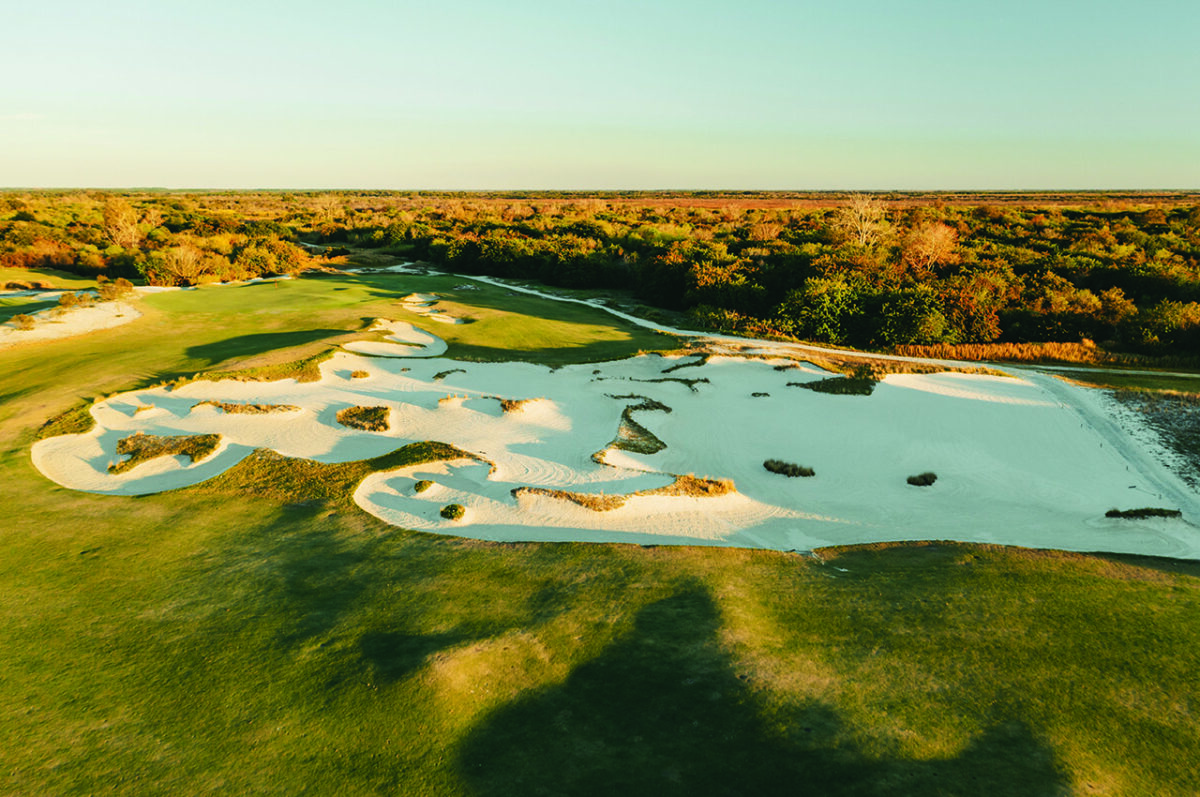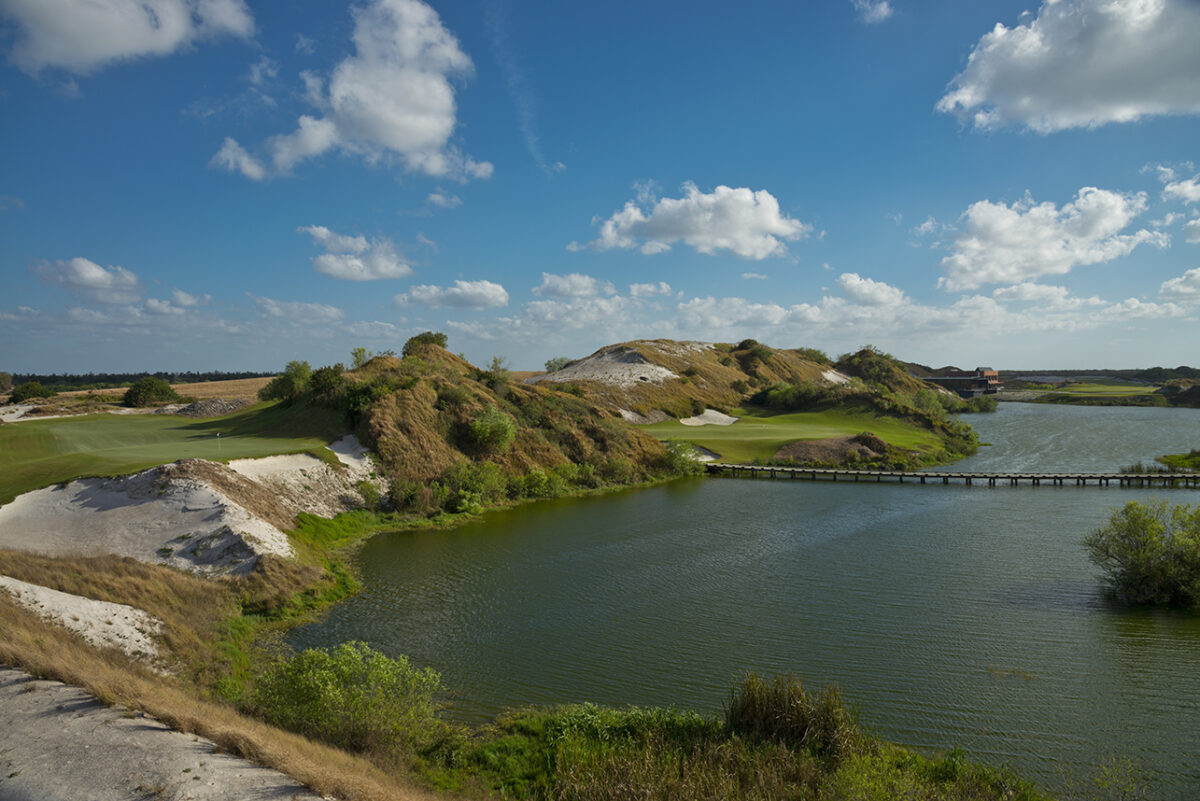The No. 1 public-access course in Florida isn’t really a surprise, seeing how it has been broadcast worldwide into living rooms during each year’s Players Championship for decades. The Players Stadium Course at TPC Sawgrass ranks as one of legendary designer Pete Dye’s top five masterpieces, perplexing PGA Tour pros since it opened in 1980, and it ties for No. 15 on Golfweek’s Best list of all modern courses in the U.S.
And it isn’t the only course on the Ponte Vedra property to rank among Golfweek’s Best Courses You Can Play in Florida. Next door to the Players Stadium Course is Dye’s Valley, which clocks in at No. 18 among the Sunshine State’s best public layouts. Dye’s Valley doesn’t have the scale or fame of its neighbor, but it does have plenty of the features, challenges and visual tricks that made its designer and namesake famous.

Looking for even more highly ranked public-access courses all at one property? In Florida, that would be Streamsong, home to Nos. 2, 3 and 4 on Golfweek’s Best list of public-access layouts. The popular resort in Bowling Green, about an hour’s drive east of Tampa or 90 minutes southwest of Orlando, features courses by Tom Doak, Gil Hanse and the team of Bill Coore and Ben Crenshaw.
Coore and Crenshaw’s Red Course tops the rankings for Streamsong’s courses, coming in at No. 2 among the state’s public-access layouts and tying for No. 37 among all modern courses in the U.S. Hanse’s Black Courses isn’t far behind, ranking No. 3 in the state and tying for 50th among modern courses. Doak’s Blue Course is right there, too, ranking No. 4 in the state and No. 53 among modern courses.

How do you choose which layout at Streamsong to play? Take our advice: Play all three, then get back to us on your favorite. Every player to visit has plenty of opinions on which course they prefer and why, and none of them are really wrong. Combined, the three layouts make Streamsong one of only a handful of resorts in the U.S. to offer so many highly ranked courses, and the resort also has started construction of a new short course, the Chain, by Coore and Crenshaw that promises even more golf.
No. 5 in the state is no stranger to PGA Tour fans either, as Bay Hill Club and Lodge in Orlando is home each year to the Arnold Palmer Invitational. A statue of Palmer still stands guard near the first and 10th tees, reminding players of the decades in which the King lived at the resort while leaving his fingerprints on every aspect of the operation.
Florida is also home to a staggering array of private courses, many of which serve as winter retreats for well-heeled clientele and residents who chase the warmth south each year. Topping the list of private courses in the state is Seminole, a Donald Ross design in Juno Beach that is No. 12 on Golfweek’s Best list of classic courses in the U.S. and one of the most exclusive clubs in the U.S.
Can’t get a tee time at Seminole? Get in line – almost all of us are waiting on that call. In the meantime, check out the rest of the best public-access and private clubs in Florida below.
